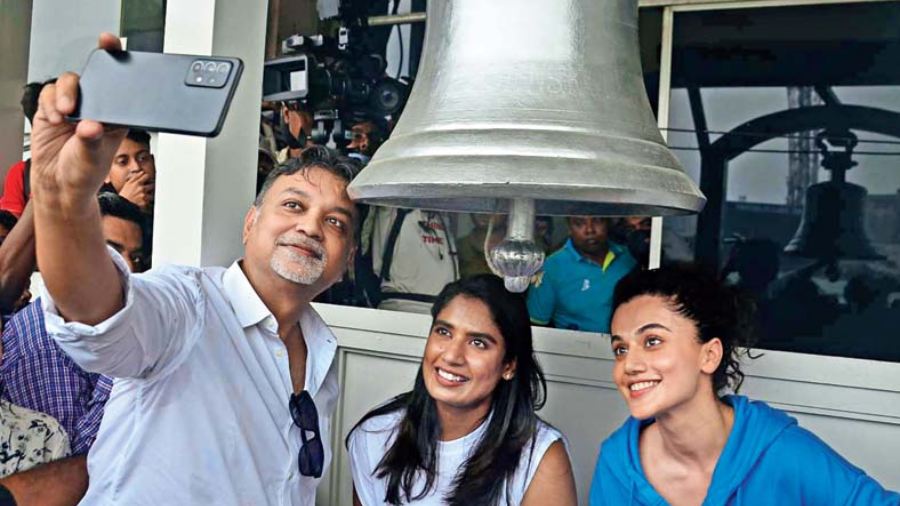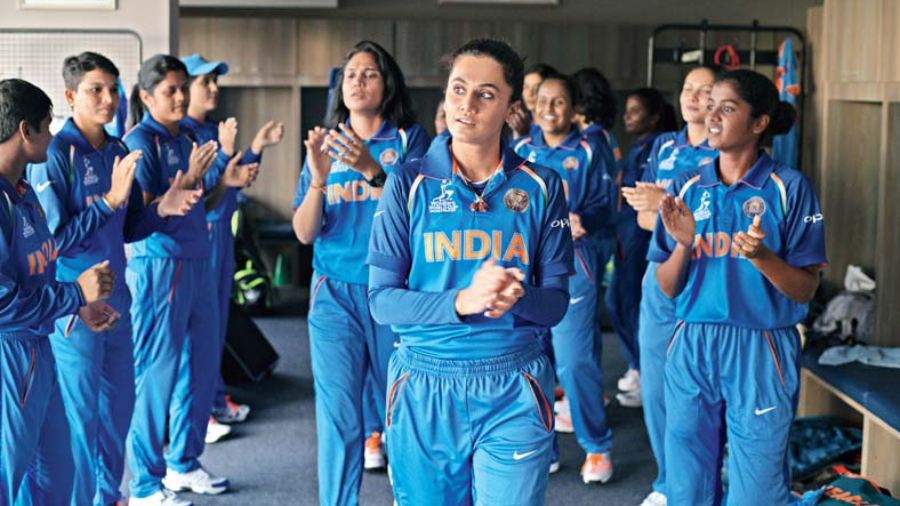Srijit Mukherji directs Shabaash Mithu, based on the remarkable life and career of former India cricket captain Mithali Raj, the highest run-scorer in women’s international cricket and considered to be one of the greatest female cricketers ever, with Taapsee Pannu padding up as Mithali. We chatted with Srijit on the film that releases in theatres today, what Taapsee brought to the role and what makes him a passionate follower of the game.
The trailer of Shabaash Mithu has met with a positive response, with even the likes of Sachin Tendulkar tweeting about it. That must be quite a confidence booster....
It is! The reaction to the trailer has been almost euphoric, which is surprising because the trailers of a lot of big films have also released at this time and to be celebrated almost as much as them came as a pleasant surprise to the team. People have noticed Taapsee fitting the bill in terms of her playing technique and her body language as a cricketer, and also the last sharp intake of breath after the question that, ‘Who’s your favourite male cricketer?’ These are the parts from the trailer that are being celebrated and talked about, and our hard work feels vindicated.
Initially, you were not attached to direct this film. What was your reaction when you first heard that a biopic on Mithali Raj was being made?
I have been wanting to make a cricket biopic for the longest time. When I heard about this film I knew I would be interested to watch it whenever it came out. I am a cricket buff and I have always had an interest in women’s cricket and the way in which it has evolved over the years. I would follow matches and cricketers and I was quite keen and clued in. I was keen on watching both Mithali and Jhulan’s (Goswami) biopic (starring Anushka Sharma). These two cricketers have made the country very, very proud.
So coincidentally, when Shabaash Mithu was offered to me, I was over the moon. I usually work on a film — whether it’s written by me or by someone else — right from the initial stages. But in this case I didn’t mind because the subject was cricket and the film was on Mithali, one of the greatest ever to play for India. So I jumped right into it.
You have almost always directed from scripts written by you. What was it like directing someone else’s writing? Was it a disadvantage of sorts?
Of course, there are disadvantages. When you are attached to the writing of a film from the start, it’s natural that one would write things a little differently. Here, I had to sit with the writer (Priya Aven) and align my vision. That extra effort I needed to put in. There is also an advantage in the sense that it gives you an objective distance with your craft. The writer influences the director a lot, and sometimes not in a very good way. In this film, I always had that objective distance where I could concentrate on the directorial aspects of film-making alone... like focusing on the cricketing bits, the technique, the production design, how do we shoot the matches, the logistics... this, that, everything....
Having Taapsee on board must have been half the battle won because not only is she a very dedicated actor, but also has the discipline and agility of a sportsperson....
Ya, ya, absolutely! Taapsee is a natural athlete. Having her was definitely a big advantage. And then, of course, she’s extremely hardworking. We would start at 5 or 6 in the morning, we would practise at the nets.... I would pad up as well and practise at the same nets because cricket is such a passion for me and I thought that me doing so would enthuse everyone else. So Taapsee, I and the entire team would practise together. And that practice paid off because I told Taapsee that mostly cricket films are shot with a lot of cuts and not continuous action.... Some cuts are, of course, necessary to maintain the flow of the game, but in this film, I wanted as much of single action as possible, without any cuts just to lend authenticity. For that to happen, someone actually need to bowl, and bowl fast, and Taapsee actually had to play the shots. It needed to be an actual cricketing experience.
I told Taapsee, ‘You not only have to learn to play cricket, you will also have to enjoy it’. She had to feel the sensation of the ball hitting the bat.

Srijit Mukherji with Mithali Raj (centre) and Taapsee Pannu at Eden Gardens in Calcutta last week. Picture: B. Halder
Being such passionate follower of the game, what was it like shooting at Lord’s Cricket Ground, which is, of course, the Mecca of cricket?
One of the finest moments of my life as a film-maker, and I will always be grateful to this film for that. Forget shooting, even visiting Lord’s would have been a goosebump kind of a moment. Shooting at The Long Room and the historic verandah at Lord’s is an experience that can’t be articulated. It was so very special.
Statistics aside, what, according to you, has been Mithali Raj’s biggest contribution to cricket?
She has done a lot not only for women’s cricket in India, but also for world cricket. In India, women have been playing cricket for a long time but that is something that never captured the public imagination. If it doesn’t do that, the game suffers financially and in terms of infrastructure, which, in turn, affects the skill, the performance levels, the confidence of the players... it’s all connected. Mithali and her team brought in awareness of women’s cricket to the level where broadcasters were forced to telecast matches and there was public interest, there was a lot of writing on social media and that, in turn, brought in investments.... That resulted in the progress of women’s cricket in India, especially after the 2017 World Cup.
At a generic level, just in terms of the cricket, pursuing a career and a dream that is not conventional and making it so big that you are considered a legend in that profession... that, in itself, is a huge achievement. It inspires millions of women and girls. Mithali’s story teaches us that if you chase your dreams with honesty and persistence you will get there eventually.
There has been growing criticism about cricket being referred to as the ‘Gentlemen’s game’. Do you address that in the film in any way?
Oh yes, absolutely! In that sense, this film is more than just a biopic, there are some serious issues that are addressed as well. In fact, we now refer to players as ‘batters’ and not batsmen. These are the changes that are a result of the direct impact that Mithali and her team had on cricket the world over. The film deals with this exact issue, but not in a preachy manner.
What makes you so passionate about the game? Did you remember the first time you held a cricket bat?
As a kid, I wouldn’t give up on the slightest chance to scamper out for a match in the neighbourhood. My earliest memories are probably of the tied Test match (between India and Australia) where Maninder Singh was trapped LBW by Greg Matthews at Chennai.
And then there was the Reliance World Cup of 1987 which kind of set the ball rolling in terms of my addiction to the game. After that, there was no looking back.
Hindi projects are happening thick and fast now for you. Will it be one foot in Calcutta and one foot in Mumbai for you going forward?
I will try and do interesting work, which may not always be commercial friendly. Some may be also. It depends on the kinds of stories that come to me and what I want to say. And I will keep telling those stories irrespective of the language. I am responding to situations and opportunities as they are happening around me and I will continue to do so. I don’t have that Hindi/ Bengali divide in mind... for me a film or series is simply a film or series.
